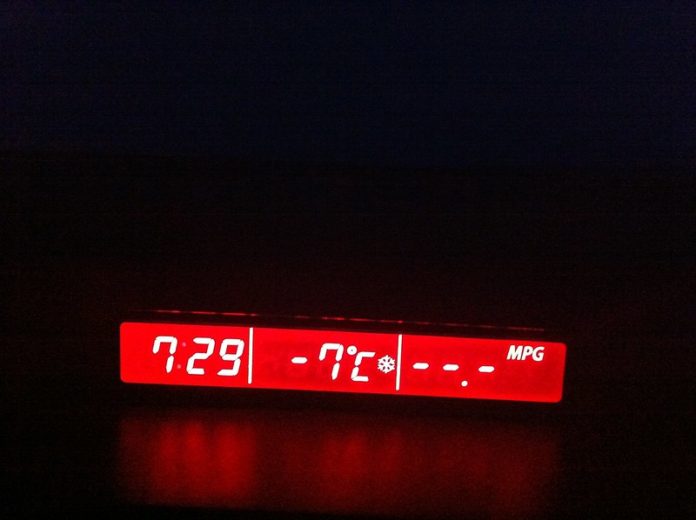
Cargroot is reader-supported. When you buy through links on our site, we may earn an affiliate commission.
A car has a thermistor instead of a thermometer. These thermistors do not accurately represent the “outside temperature.” One of the main reasons is the radiation heat that garbles the thermistor reading. On warm days, your car’s temperature would display a higher reading than the actual temperature outside.
A thermistor, unlike a thermometer, measures the change in the electrical current. This current is due to added or removed heat. This is one of the significant reasons the reading is wrong. Also, most manufacturers place the thermistor just behind the grille. This causes the reading to be higher than the actual “outside temperature.”
Does a Car Have a Thermometer?
As mentioned above, a car has a thermistor, which works very differently from a thermometer. A thermistor can detect when something has warmed up or cooled down, and its reading is based on keeping its surroundings at their current temperature. This is why the temperature reading in your car will be very different from what you may feel outside. Check the below video to understand how thermistors work.
Is a Car Temperature Sensor Accurate?
A temperature sensor measures the temperature of the air around it. If the air is too cold or too hot, it will be able to tell you that. However, since cars have a thermistor, they cannot read air temperature. It will react based on the electric current and how much heat is added or removed. This makes your car’s temperature sensor inaccurate.
How Can You Tell If You Have a Bad Temperature Sensor?
If you have a bad temperature sensor, several symptoms could indicate that your vehicle’s temperature is too high. Some of these include:
- Your car’s engine may start to overheat
- The engine may run hotter than normal
- You may hear an unusual noise when you accelerate or brake
- It may be impossible for you to turn off the air conditioning system due to high temperatures in the car
Does Misplacement of the Car Thermistor Give a Wrong Reading?
The car thermistor is the part of your car that measures the engine’s temperature. It is attached to the system and will read a different temperature than what you see on your dashboard.
The thermistor sensor consists of metallic oxides that are pressed into a cylindrical shape and encapsulated in glass or epoxy. If you have misplaced your thermistor, you will likely be unable to get a proper reading from your dashboard’s display. This can lead to overheating issues or even engine damage if left unchecked for too long. To fix this problem, you’ll need the following:
- A new thermostat housing
- A new core
- Professional help in getting the thermistor relocated
Why Does the Car Temperature Vary as Compared to the Outside Temperature?
The car’s temperature varies because of the HVAC system. The HVAC system is an essential part of the car, as it helps keep a car’s interior cool by removing heat from the inside and cooling it with vents. It does the opposite when outside temperatures drop.
When you turn on your AC, you won’t feel an immediate drop in temperature inside your car. This is because it takes some time to start working and discharging heat inside the car. During this time, the air around you may still be warm – so it takes longer for your AC unit to cool down the inside of your vehicle.
While this is happening, the temperature around you is likely warmer than it should be. This means that while your AC unit is cooling down your vehicle’s interior, other factors influence how hot or cold things feel around you: humidity levels outside versus inside, wind direction, and even sun exposure!
Can You Leave Your Dog in Your Car When It’s Hot Outside?
When the temperature outside is scorching, you might be tempted to leave your dog in the car. But what are the risks? If you’re worried about your pup’s safety, here are some things to consider.
First, there’s the obvious risk of overheating. If your dog isn’t used to being left alone for long periods, he could start panting and sweating profusely – which could lead to heat exhaustion or even death.
Second, it can be challenging for dogs to regulate their temperature when confined in a small space with limited airflow. So even if your pup doesn’t get too hot, they may still suffer dehydration if they haven’t had enough water or food in their system. Finally, leaving a dog inside a locked car for prolonged periods is inhuman. Leave the air conditioning on if you’re stepping out for five minutes.



![[Solved] Car Shaking in Reverse – Why & How to Fix It?](https://cargroot.com/wp-content/uploads/2023/03/giorgio-trovato-gBF0CCP_Qy0-unsplash-100x70.jpg)


